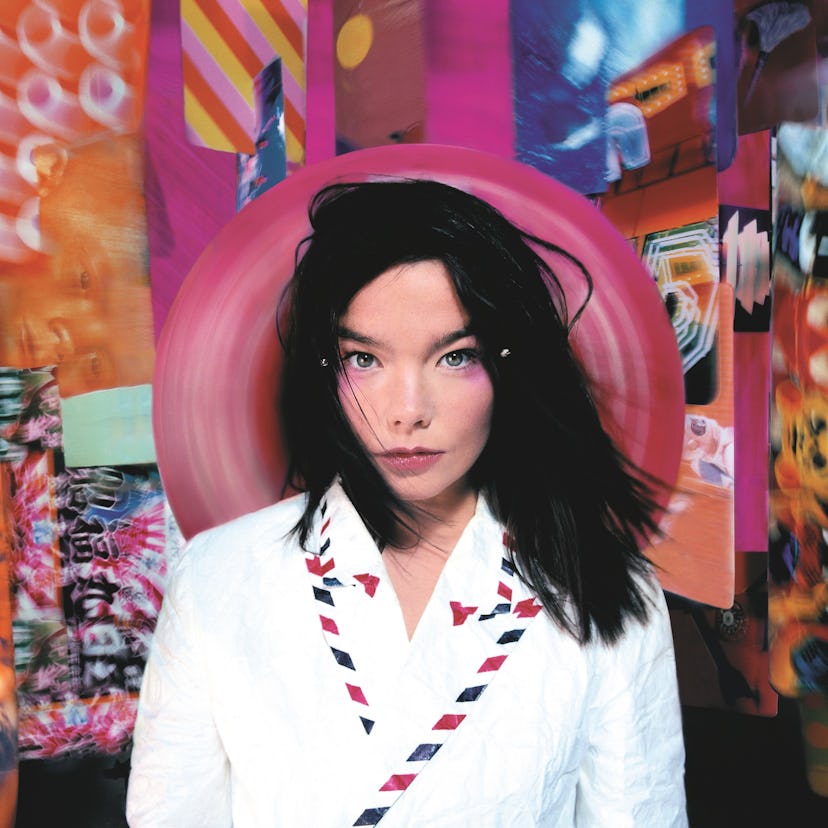Prick Up Your Ears

Pop music’s most intriguing outlier, Björk has never failed to make indelible images. As famous for the swan dress she wore at the 2001 Academy Awards as for her preternaturally swooping voice, wildly inventive videos, and haunting performance as a woman going blind in Lars von Trier’s 2000 movie, Dancer in the Dark, the Icelandic singer, 49, remains one of those rare and talented creatures whose influence ripples across multiple art forms. Beginning March 8 (through June 7), she takes center stage at New York’s Museum of Modern Art (MoMA), where “Björk,” a retrospective, surveys her creative experiments over the past 20 years. The exhibition will feature a new, immersive music-and-film project; trace her seven studio albums, from 1993’s Debut to 2011’s Biophilia (released in a pioneering album-app format); and include her collaborations with directors, photographers, and designers like Alexander McQueen. “I always thought she was a muse,” says Klaus Biesenbach, the chief curator at large for MoMA, who organized the show. “But after looking at all of her videos and films, I see that there are motifs that are recurrent in the work. It doesn’t matter which director it’s made with—she’s directing.” Whatever flighty aura she has been known to project, Björk is remarkably scientific in her approach, Biesenbach insists. “She’ll say, ‘Let’s ask an architect what that shape means and how it sounds.’ ” Leading the visitor through this musical mystery tour will be Björk herself—or rather an audio guide cowritten by Björk and the Icelandic writer Sjón Sigurdsson that incorporates both real and fictitious events drawn from her life. The artist will be present—in your ears. Says Biesenbach, “It will be as if you were in her brain, listening to the world while she sings.”
Photos: Prick Up Your Ears
Album cover for Post, 1995. Photograph by Stephane Sednaoui. Image courtesy of Wellhart Ltd and One Little Indian.
Album cover for Debut, 1993. Photograph by Jean-Baptiste Mondino. Courtesy of Wellhart Ltd and One Little Indian.
It was in 1993 that America learned of one Björk Guðmundsdóttir, best known simply as Björk. With songs like Venus as a Boy and Big Time Sensuality, her seductive interpretation of triphop, and her defiant androgyny, she came to define the style and look of the European alternative scene, one that Madonna herself, the decade’s earlier provocateur, would crip when she asked the Icelandic singer to collaborate on her Bedtime Stories album. Here, she is pictured in 1993 in The Face, one of the iconic magazines of the period like Details and Sky that is no longer around. Photograph by Glen Luchford.
Album cover for Homogenic, 1997. Photograph by Nick Knight. Courtesy of Wellhart Ltd and One Little Indian.
A still from the video “Big Time Sensuality,” 1993. Courtesy of Wellhart Ltd and One Little Indian.
Album cover for Medulla, 2004. Photograph by Inez van Lamsweerde & Vinoodh Matadin. Courtesy of Wellhart Ltd and One Little Indian.
A still from the video “Mutual Core,” 2012. Directed by Andrew Thomas Huang, courtesy of Wellhart Ltd and One Little Indian.
A still from Dancer in the Dark, 2000. Courtesy of Mary Evans/FilmFour/Zentropa Entertainments/Ronald Grant/Everett Collection.
A still from the video “Wanderlust,” 2008. Directed by Andrew Thomas Huang, courtesy of Wellhart Ltd and One Little Indian.